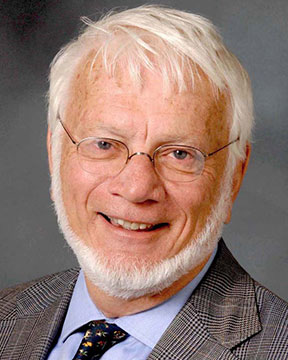ORALS
SESSION: SISAMWedPM1-R5
Functional Materials | Zehetbauer International Symposium on Science of Intelligent and Sustainable Advanced Materials (4th Intl. Symp. on Science of Intelligent and Sustainable Advanced Materials (SISAM)) |
| Wed Nov, 7 2018 / Room: Copacabana A (150/1st) | |
| Session Chairs: Ernst Bauer; Gerda Rogl; Session Monitor: TBA |
14:00: [SISAMWedPM105] Keynote
Spinodal Decomposition in High-Entropy Half-Heusler Thermoelectrics with High ZT~1.5 Peter
Rogl1 ;
1University of Vienna, Faculty of Chemistry, Wien, Austria;
Paper Id: 189
[Abstract] Besides skutterudites and Zintl phases, Half Heusler (HH) alloys are currently the most promising candidates for thermoelectric (TE) devices at elevated temperatures; they can be used in a wide range of temperatures, and their starting materials are abundant and cheap [1]. In particular, the nanostructuring of TiNiSn-based thermoelectric materials - not only by ball-milling but also by preferably system-inherent phase separation - has accomplished multicomponent HH alloys with attractive ZTs for n-type TE materials based on (Ti,Zr)-Ni-Sn. These values could be achieved on the basis of a profound knowledge not only on isothermal phase relations, temperature dependent solubilities, but also on solidification behavior.
The detailed experimental investigation of the constitution of the (Ti,Zr)-Ni-Sn systems, including liquidus projections, Scheil solidification diagrams, as well as CALPHAD modelling, provided the necessary basis for an elaborate synthesis (annealing/hot-pressing) route in order to get a suitable and reproducible microstructure. In addition, exploiting inherent but coherent binodal/spinodal demixing at subsolidus temperatures within the sections TiNiSn-ZrNiSn and TiNiSn-HfNiSn, we were able to achieve for the n-type half Heusler alloy Ti0.5Zr0.25Hf0.25NiSn a ZTmax = 1.5 at 825 K. The demixing is a balanced effect of destabilisation of the solid solution by a positive enthaphy of mixing, compensated by elastic strain energy (coherent binodal) but also by the entropy of mixing. In this respect, the five component thermoelectric material can be considered as a so-called pseudoternary high-entropy alloy system. The experimental data are backed by SEM/TEM analyses as well as by DFT results.
References:
[1] G. Schierning, R. Chavez, R, Schmechel, B. Balke, G. Rogl, P. Rogl, "Concepts for Medium-high to High Temperature Thermoelectric Heat-to-Electricity Conversion: A Review of Selected Materials and Basic Considerations of Module Design", Translational Materials Research 2, 025001, 1-26 (2015)
SESSION: SISAMWedPM1-R5
Functional Materials | Zehetbauer International Symposium on Science of Intelligent and Sustainable Advanced Materials (4th Intl. Symp. on Science of Intelligent and Sustainable Advanced Materials (SISAM)) |
| Wed Nov, 7 2018 / Room: Copacabana A (150/1st) | |
| Session Chairs: Ernst Bauer; Gerda Rogl; Session Monitor: TBA |
14:50: [SISAMWedPM107] Invited
Severe Plastic Deformation via High Pressure Torsion in Thermoelectrics Gerda
Rogl1 ;
Peter
Rogl2 ;
Ernst
Bauer3 ;
Michael J.
Zehetbauer4 ;
1Christian Doppler Laboratory for Thermoelectricity, Wien, Austria;
2University of Vienna, Faculty of Chemistry, Wien, Austria;
3Technische Universität Wien, Vienna, Austria;
4University of Vienna, Wien, Austria;
Paper Id: 188
[Abstract] Thermoelectric materials are able to directly convert thermal energy into electrical energy, and vice versa. The potential of a material for thermoelectric applications is determined by the dimensionless figure of merit, ZT, which is directly proportional to the Seebeck coefficient squared and the temperature, and inversely proportional to the electrical resistivity and thermal conductivity, the latter consisting of an electronic and phonon part. As the Seebeck coefficient, the resistivity and electronic part of the thermal conductivity, are interdependent, one way to enhance ZT is to reduce the phonon part by enhancing the scattering of the heat carrying phonons.
High pressure torsion (HPT) is known as an outstanding technique in the methods of severe plastic deformation (SPD) to produce bulk ultra fine grained and nano crystalline materials, by introducing many grain boundaries as well as defects like dislocations and point defects [1,2,3].
In the first step, HPT-mediated nano crystallization was used to reduce the thermal conductivity of ball milled (BM) and hot pressed (HP) skutterudites. The samples, which were HPT processed after BM and HP, show enhanced ZT values up to a factor of 2 in comparison to BM and HP samples.
In the second step, HPT at elevated temperatures and in argon atmosphere was used to directly consolidate skutterudite powders into a solid. This way, time and energy consuming BM and HP can be avoided [4,5].
In this paper, we compare the grain sizes as well as dislocation densities and structural, physical, and mechanical properties of BM + HP samples with BM + HP + HPT samples, along with HPT produced samples (synchrotron diffraction data, collected from 300 - 800 K, SEM and TEM investigations reveal the modifications).
References:
[1] M.J. Zehetbauer, Y.T. Zhu (eds), Modeling of Strength and Strain Hardening of Bulk Nanostructured Materials in: Bulk nanostructured materials, Wiley VCH, Weinheim (2009).
[2] M. Zehetbauer, H.P. Stuewe, A. Vorhauer, E. Schafler, J. Kohut, Adv. Eng. Mater. 5 (2003) 33.
[3] T. Ungar, M. Zehetbauer, Scr. Mater. 35 (1996) 1467.
[4] G. Rogl, P. Rogl, E. Bauer, M. Zehetbauer, Severe plastic deformation, a tool to enhance thermoelectric performance, in: Thermoelectric Nanomaterials, K. Kuomoto, T. Mori (eds), Springer Series in Materials Science 182, Springer Verlag Berlin (2013).
[5] G. Rogl, A. Grytsiv, J. Bursik, J. Horky, R. Anbalagan, E. Bauer, R.C. Mallik, P. Rogl, M. Zehetbauer, Phys. Chem. Chem. Phys. 17 (2015) 3715.



















